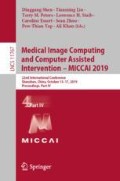Abstract
Medical image synthesis techniques can circumvent the need for costly clinical scan acquisitions using different modalities such as functional Magnetic Resonance Imaging (MRI). Recently, deep learning frameworks were designed to predict a target medical modality from a source one (e.g., MRI from Computed Tomography (CT)). However, such methods which work well on images might fail when handling geometric brain data such as graphs (or connectomes). To the best of our knowledge, learning how to predict brain graph from a source graph based on geometric deep learning remains unexplored [1]. Given a set of isomorphic source and target brain graph (i.e., derived from the same parcellation brain template so their topology is similar), learning how to predict target brain graph from a source graph has two major challenges. The first one is that the source and target domains might have different distributions, which causes a domain fracture. The second challenge can be viewed as a limitation of existing image synthesis methods which address the domain fracture and multimodal data prediction independently. To address both limitations, we unprecedentedly propose a Symmetric Dual Adversarial Domain Alignment (SymDADA) framework for predicting target brain graph from a source graph. SymDADA aligns source and target domains by learning their shared embedding while alternating two regularization constraints: (i) adversarial regularization matching the distribution of the learned shared embedding with that of the source graphs using training and testing data, and (ii) adversarial regularization enforcing the embedded source distribution to match the distribution of the predicted target graphs using only the training samples. In this way, we are optimally adapting the source to the target space as we are jointly predicting the target graph when learning the graph embedding. Our proposed SymDADA framework outperformed its variants for predicting a target brain graph from a source graph in healthy and autistic subjects.
This work was supported by Bilimsel Araştırma Projeleri (BAP) fund from Istanbul Technical University.
Access this chapter
Tax calculation will be finalised at checkout
Purchases are for personal use only
Notes
- 1.
http://fcon_1000.projects.nitrc.org/indi/abide/.
References
Soussia, M., Rekik, I.: A review on image-and network-based brain data analysis techniques for Alzheimer’s Disease diagnosis reveals a gap in developing predictive methods for prognosis. arXiv preprint arXiv:1808.01951 (2018)
Olut, S., Sahin, Y.H., Demir, U., Unal, G.: Generative adversarial training for MRA image synthesis using multi-contrast MRI. arXiv preprint arXiv:1804.04366 (2018)
Goodfellow, I., Pouget-Abadie, J., et al.: Generative adversarial nets. In: Advances in Neural Information Processing Systems, pp. 2672–2680 (2014)
Ben-Cohen, A., et al.: Cross-modality synthesis from CT to PET using FCN and GAN networks for improved automated lesion detection. Eng. Appl. Artif. Intell. 78, 186–194 (2019)
Ktena, S.I., et al.: Distance metric learning using graph convolutional networks: application to functional brain networks. In: Descoteaux, M., Maier-Hein, L., Franz, A., Jannin, P., Collins, D.L., Duchesne, S. (eds.) MICCAI 2017. LNCS, vol. 10433, pp. 469–477. Springer, Cham (2017). https://doi.org/10.1007/978-3-319-66182-7_54
Parisot, S., et al.: Spectral graph convolutions for population-based disease prediction. In: Descoteaux, M., Maier-Hein, L., Franz, A., Jannin, P., Collins, D.L., Duchesne, S. (eds.) MICCAI 2017. LNCS, vol. 10435, pp. 177–185. Springer, Cham (2017). https://doi.org/10.1007/978-3-319-66179-7_21
Moreno-Torres, J.G., Raeder, T., Alaiz-RodríGuez, R., Chawla, N.V., Herrera, F.: A unifying view on dataset shift in classification. Pattern Recogn. 45, 521–530 (2012)
Pan, Y., Liu, M., Lian, C., Zhou, T., Xia, Y., Shen, D.: Synthesizing missing PET from MRI with cycle-consistent generative adversarial networks for Alzheimer’s disease diagnosis. In: Frangi, A.F., Schnabel, J.A., Davatzikos, C., Alberola-López, C., Fichtinger, G. (eds.) MICCAI 2018. LNCS, vol. 11072, pp. 455–463. Springer, Cham (2018). https://doi.org/10.1007/978-3-030-00931-1_52
Yi, X., Walia, E., Babyn, P.: Generative adversarial network in medical imaging: a review. arXiv preprint arXiv:1809.07294 (2018)
Pan, S., Hu, R., Long, G., Jiang, J., Yao, L., Zhang, C.: Adversarially regularized graph autoencoder. arXiv preprint arXiv:1802.04407 (2018)
Kipf, T.N., Welling, M.: Semi-supervised classification with graph convolutional networks. arXiv preprint arXiv:1609.02907 (2016)
Wang, B., Ramazzotti, D., De Sano, L., Zhu, J., Pierson, E., Batzoglou, S.: SIMLR: a tool for large-scale single-cell analysis by multi-kernel learning. bioRxiv (2017) 118901
Mahjoub, I., Mahjoub, M.A., Rekik, I.: Brain multiplexes reveal morphological connectional biomarkers fingerprinting late brain dementia states. Sci. Rep. 8, 4103 (2018)
Soussia, M., Rekik, I.: Unsupervised manifold learning using high-order morphological brain networks derived from T1-w MRI for autism diagnosis. Front. Neuroinform. 12 (2018)
Dhifallah, S., Rekik, I., Initiative, A.D.N., et al.: Clustering-based multi-view network fusion for estimating brain network atlases of healthy and disordered populations. J. Neurosci. Methods 311, 426–435 (2019)
Author information
Authors and Affiliations
Corresponding author
Editor information
Editors and Affiliations
Rights and permissions
Copyright information
© 2019 Springer Nature Switzerland AG
About this paper
Cite this paper
Bessadok, A., Mahjoub, M.A., Rekik, I. (2019). Symmetric Dual Adversarial Connectomic Domain Alignment for Predicting Isomorphic Brain Graph from a Baseline Graph. In: Shen, D., et al. Medical Image Computing and Computer Assisted Intervention – MICCAI 2019. MICCAI 2019. Lecture Notes in Computer Science(), vol 11767. Springer, Cham. https://doi.org/10.1007/978-3-030-32251-9_51
Download citation
DOI: https://doi.org/10.1007/978-3-030-32251-9_51
Published:
Publisher Name: Springer, Cham
Print ISBN: 978-3-030-32250-2
Online ISBN: 978-3-030-32251-9
eBook Packages: Computer ScienceComputer Science (R0)


